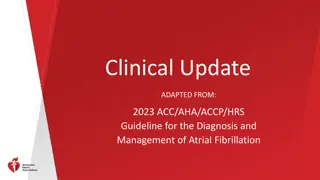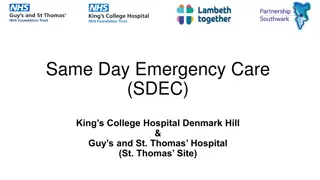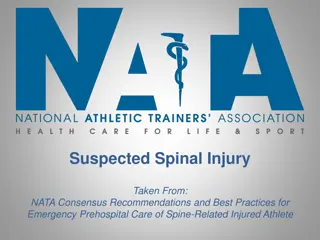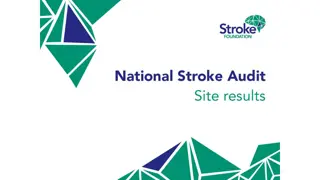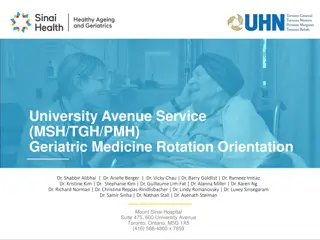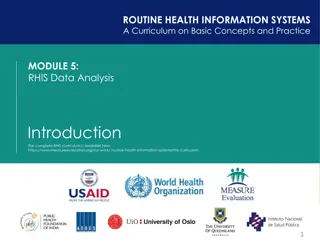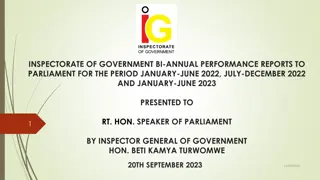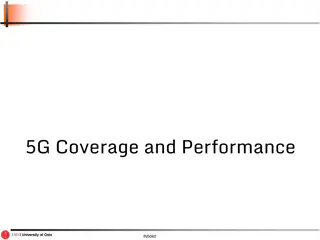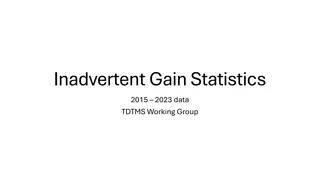Hospital Performance Analysis: Key Findings and Recommendations
Data-driven assessment of hospital performance based on Key Performance Indicators. It focuses on areas such as unscheduled care, hospital admissions and discharges, and patient safety. The key findings highlight variations in ED waiting times, incomplete treatment in ED settings, and potential under-utilization of Acute Medical Assessment Units. Recommendations for improving clinical and economic outcomes are discussed.
- hospital performance
- key performance indicators
- ED waiting times
- incomplete treatment
- Acute Medical Assessment Units
Download Presentation
Please find below an Image/Link to download the presentation.
The content on the website is provided AS IS for your information and personal use only. It may not be sold, licensed, or shared on other websites without obtaining consent from the author. Download presentation by click this link. If you encounter any issues during the download, it is possible that the publisher has removed the file from their server.
Presentation Transcript
IGEES Irish Government Economic and Evaluation Service Spending Review 2022 Hospital Performance: An Analysis of HSE Key Performance Indicators Conor Clancy, Conan Shine & Mark Hennessy Department of Health March 2023
Spending Review 2022 Overview, Aims & Objectives Overview The paper provides a data driven assessment of hospital performance relative to specified Key Performance Indicators that form part of the HSE National Service Plan. The paper specifically focusses on areas of unscheduled care performance, efficiencies in hospital admission and discharge (for example, admission pathways & Delayed Transfer of Cares), and patient safety. Aims and Objectives The paper provides; I. an evaluation of the current active performance management system in the HSE; II. A more systematic approach to identifying improvements to acute care delivery through examination of high and low scoring hospitals on particular KPIs and; III. Areas where investment could be targeted to maximise clinical and economic outcomes relative to cost. 2 Rialtas na h ireann | Government of Ireland
Spending Review 2022 Key Findings Key Policy Relevant Findings ED Waiting Times: Wide variation in ED wait times across hospitals is observed. At a hospital level, 23 out of 26 (88%) hospitals are below the HSE designated target of 70% admissions within six hours. ED wait time performance in hospitals is persistent across years, indicating that interventions to reduce long waits have been potentially ineffective. The literature demonstrates that ED wait times can have significant clinical consequences for patients, so further remediatory actions should likely be taken to reduce these costs. Incomplete Treatment in ED Settings: Incomplete treatment represents a patient safety concern and an inefficiency in the provision of emergency department services. Relative to the HSE set target - < 6.5% - substantial differences in hospital performance is identified, with performance varying from 16.7% of patients having incomplete treatment in St James, to 1.3% in St Luke s Kilkenny. Acute Medical Assessment Unit (AMAU) Utilisation: Potential under-utilisation of AMAUs is observed across the acute care system, with 19 out of 29 hospitals having AMAU discharge rates below HSE targeted level. Effective utilisation of AMAUs is shown in the literature to reduce hospital average length of stay (ALOS), reduce ED wait times for beds, improve the rate of appropriate treatment, and reduce all- cause in-hospital mortality. Further research is needed to determine potential interventions for increasing AMAU utilisation, and whether current targets could be refined to account for differences in patient and hospital characteristics such as patient complexity. 3 Rialtas na h ireann | Government of Ireland
Spending Review 2022 Key Findings (Continued) Key Policy Relevant Findings Elective Day-Of-Surgical-Admission: HSE Model of Care guidelines outline numerous benefits from admission of patients on day of surgery. Compliance for hospitals on this metric is mixed, with 22 out of 30 hospitals having day of surgery admission rates above 70% (compared to a national HSE target of 80%). A few hospitals are identified as underperformers on this metric, with St. James having a day of surgical admission rate of 16.5%. Further analysis is therefore required to explore whether improvements can be made for a select group of hospitals on this metric. Delayed Transfer of Care: Delayed Transfers of Care have a material impact on bed utilisation levels in Irish hospitals, with 7% of all bed days used attributable to patients suitable for discharge. The HSE has set a target for Delayed Transfers of Care affecting 200k discharges in 2019, falling to 175k in 2021. In 2019 a total of 240,000 beds were subject to delayed transfer of care. Substantial regional and hospital level variation in the level of delayed transfer of care is also identified, with for example 10% of bed days used in RHA A attributable to patients awaiting discharge compared to just 4% in RHA F. Patient Safety: Hospital acquired infections (HAIs) and medication incidents pose costs for both hospitals and patients. Incidence of HAIs is spread across all hospitals, although hospitals of greater complexity appear to have higher rates of infection for Staph infections, while no clear linkage is present for C. difficile infections. A greater focus on mitigating the spread of C. difficile, CPE, and S. aureus may be a cost-effective strategy to improve hospital performance, although further research would be required to determine what achievable reductions in HAIs are in each hospital model or RHA. 4 Rialtas na h ireann | Government of Ireland









